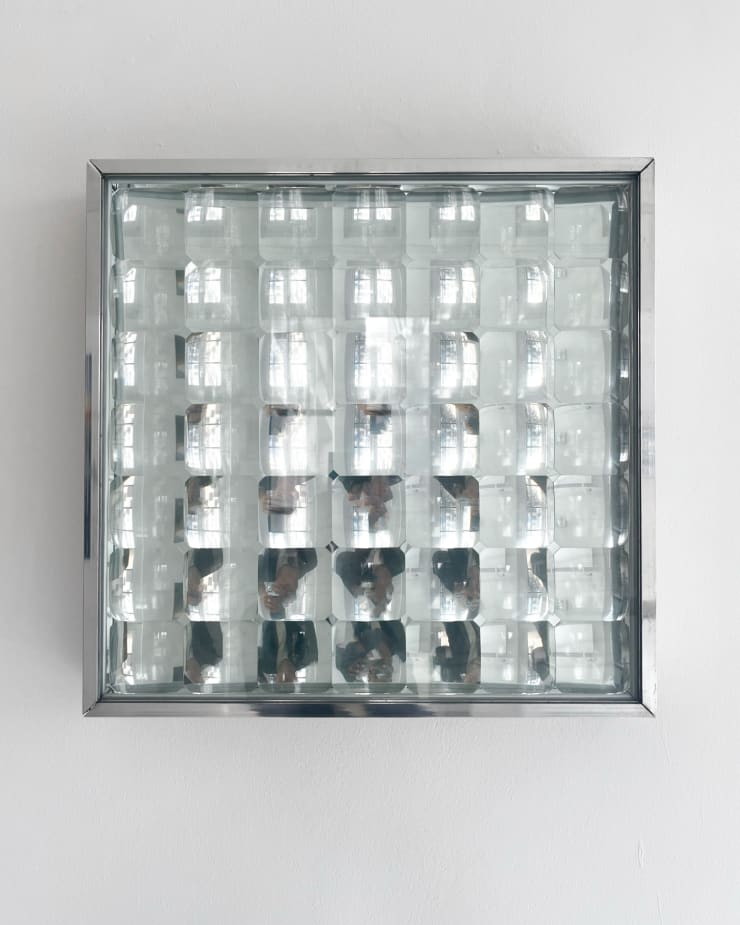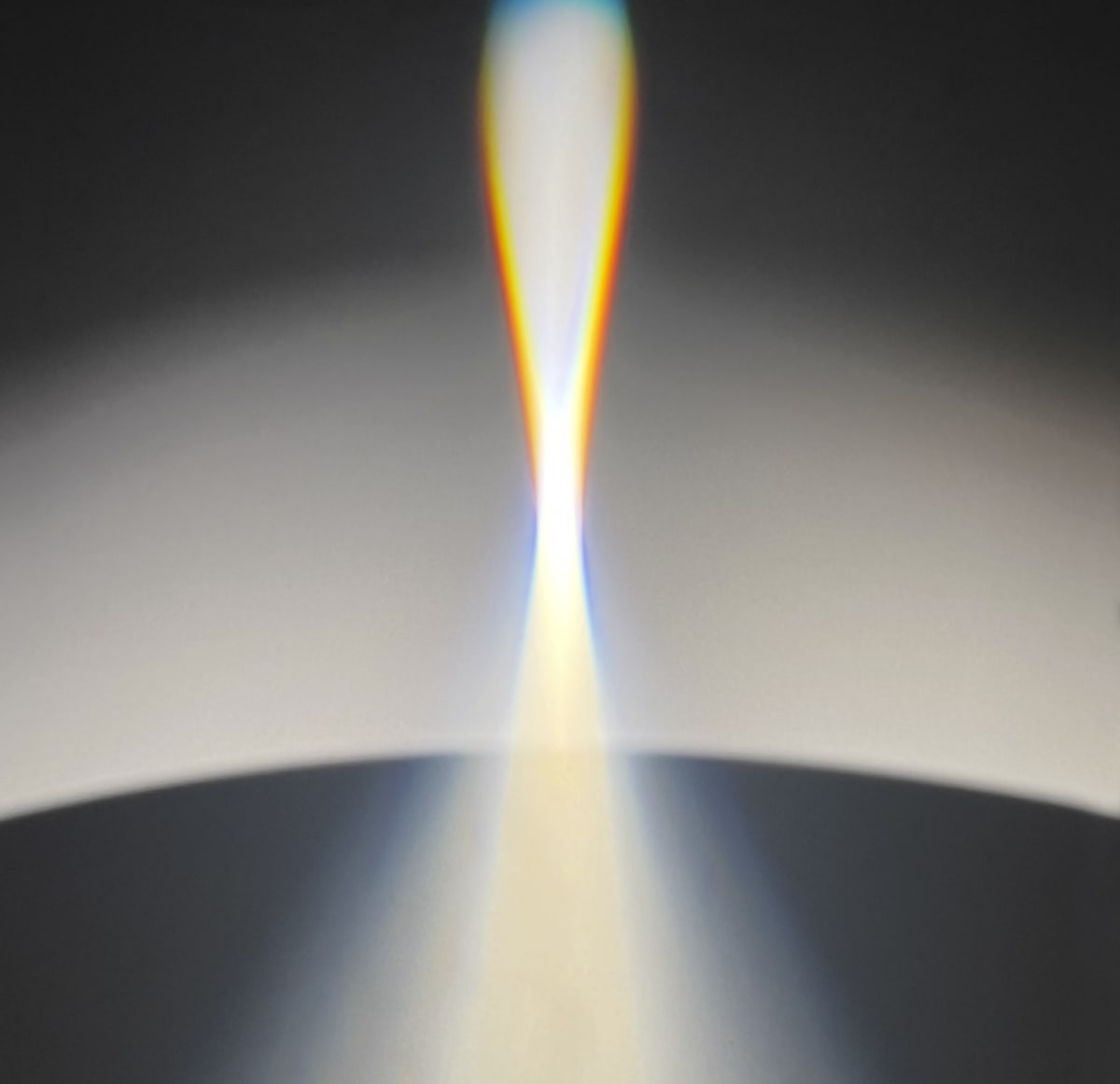Adolf Luther German, 1912-1990
Adolf Luther (1912-1990) is considered one of the key pioneers of the German light and space movement in the 20th century. Trained as a lawyer and self-taught as an artist, he turned away from traditional painting in the 1950s in a radical search for a more immediate experience of reality. Gradually, he eliminated perspective, figuration, and color-until light itself became the central material of his practice. His goal was not to create a new visual language, but to abandon the image altogether in order to make light perceptible in its purest, most energetic form.
With mirrors, concave lenses, glass objects and light installations, Luther created visual fields shaped by reflection, transparency and movement. Light became sculptural material, space a dynamic force. He referred to the act of smashing glass-a material he saw as visually immaterial and closely related to light-as a "process of dematerialization." In this gesture, physical insight and poetic radicalism converge.
Though not a formal member of the ZERO group, Luther exhibited alongside its key figures. His work has been shown internationally, including at the Guggenheim Museum in New York, the Grand Palais in Paris, the Museum Ludwig in Cologne and the Wilhelm Hack Museum in Ludwigshafen. In 2025, the Kunstmuseen Krefeld will dedicate a major retrospective to his work (Sehen ist schön at the Kaiser Wilhelm Museum). His pieces are represented in numerous public and private collections-they stand as one of the most rigorous and visionary attempts of postwar art to not represent perception, but to reorganize it.









